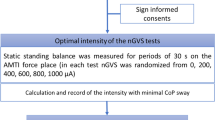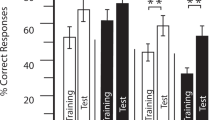Abstract
While we walk through the environment, we constantly receive inputs from different sensory systems. For us to accomplish a given task, for example to reach a target location, the sensory information has to be integrated to update our knowledge of self-position and self-orientation with respect to the target so that we can correctly plan and perform the remaining trajectory. As has been shown previously, vestibular information plays a minor role in the performance of linear goal-directed locomotion when walking blindfolded toward a previously seen target within a few meters. The present study extends the question of whether vestibular information is a requirement for goal-directed locomotion by studying a more complex task that also involves rotation: walking a triangular path. Furthermore, studying this task provides information about how we walk a given trajectory, how we move around corners, and whether we are able to return to the starting point. Seven young male, five labyrinthine-defective (LD) and five age- and gendermatched control subjects were asked to walk a previously seen triangular path, which was marked on the ground, first without vision (EC) and then with vision (EO). Each subject performed three clockwise (CW) and three counterclockwise (CCW) walks under the EC condition and one CW and CCW walk under the EO condition. The movement of the subjects was recorded by means of a 3D motion analysis system. Analysis of the data showed that LD subjects had, in the EC condition, a significantly larger final arrival error, which was due to increased directional errors during the turns. However, there was no difference between the groups as regards the overall path length walked. This shows that LD subjects were able to plan and execute the given trajectory without vision, but failed to turn correctly around the corners. Hence, the results demonstrate that vestibular information enhances the ability to perform a planned trajectory incorporating whole body rotations when no visual feedback is available.
Similar content being viewed by others
Author information
Authors and Affiliations
Corresponding author
Rights and permissions
About this article
Cite this article
Glasauer, S., Amorim, M.A., Viaud-Delmon, I. et al. Differential effects of labyrinthine dysfunction on distance and direction during blindfolded walking of a triangular path. Exp Brain Res 145, 489–497 (2002). https://doi.org/10.1007/s00221-002-1146-1
Received:
Accepted:
Published:
Issue Date:
DOI: https://doi.org/10.1007/s00221-002-1146-1




